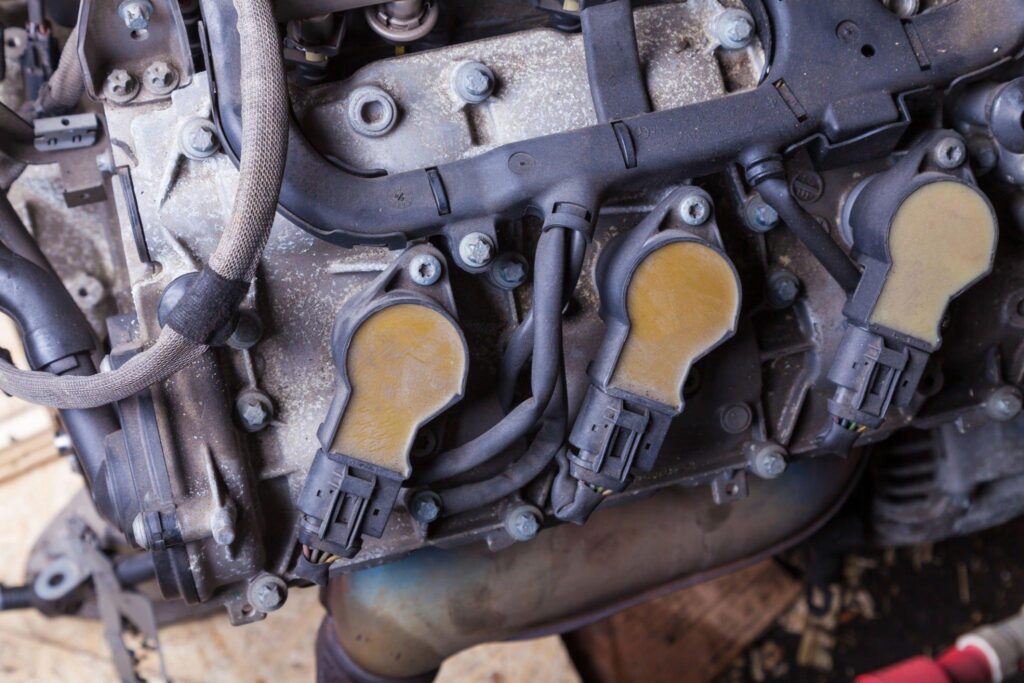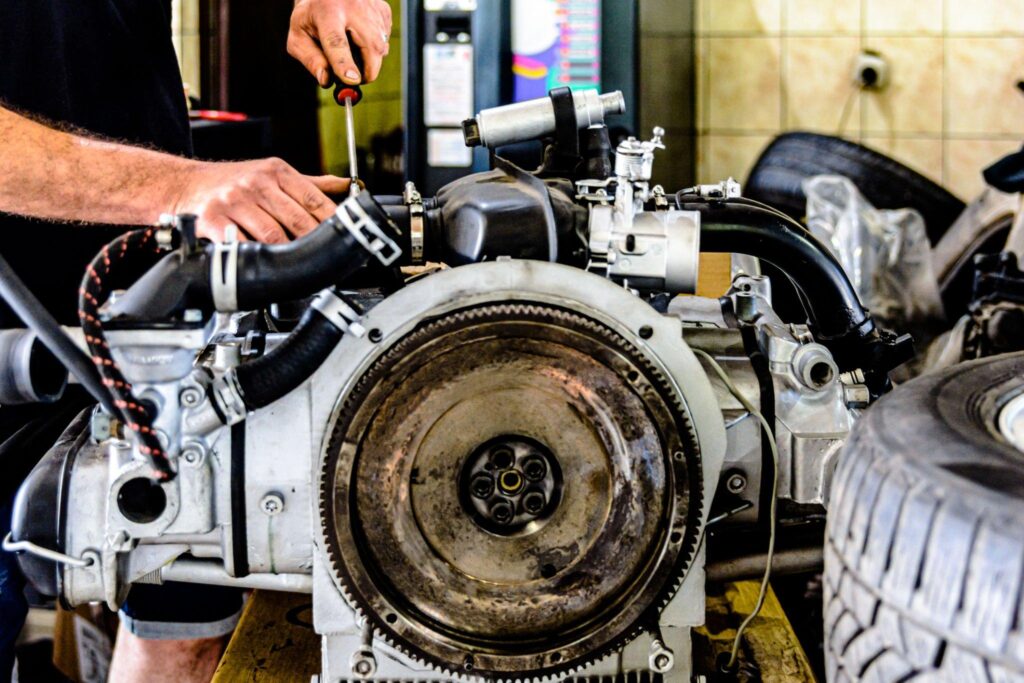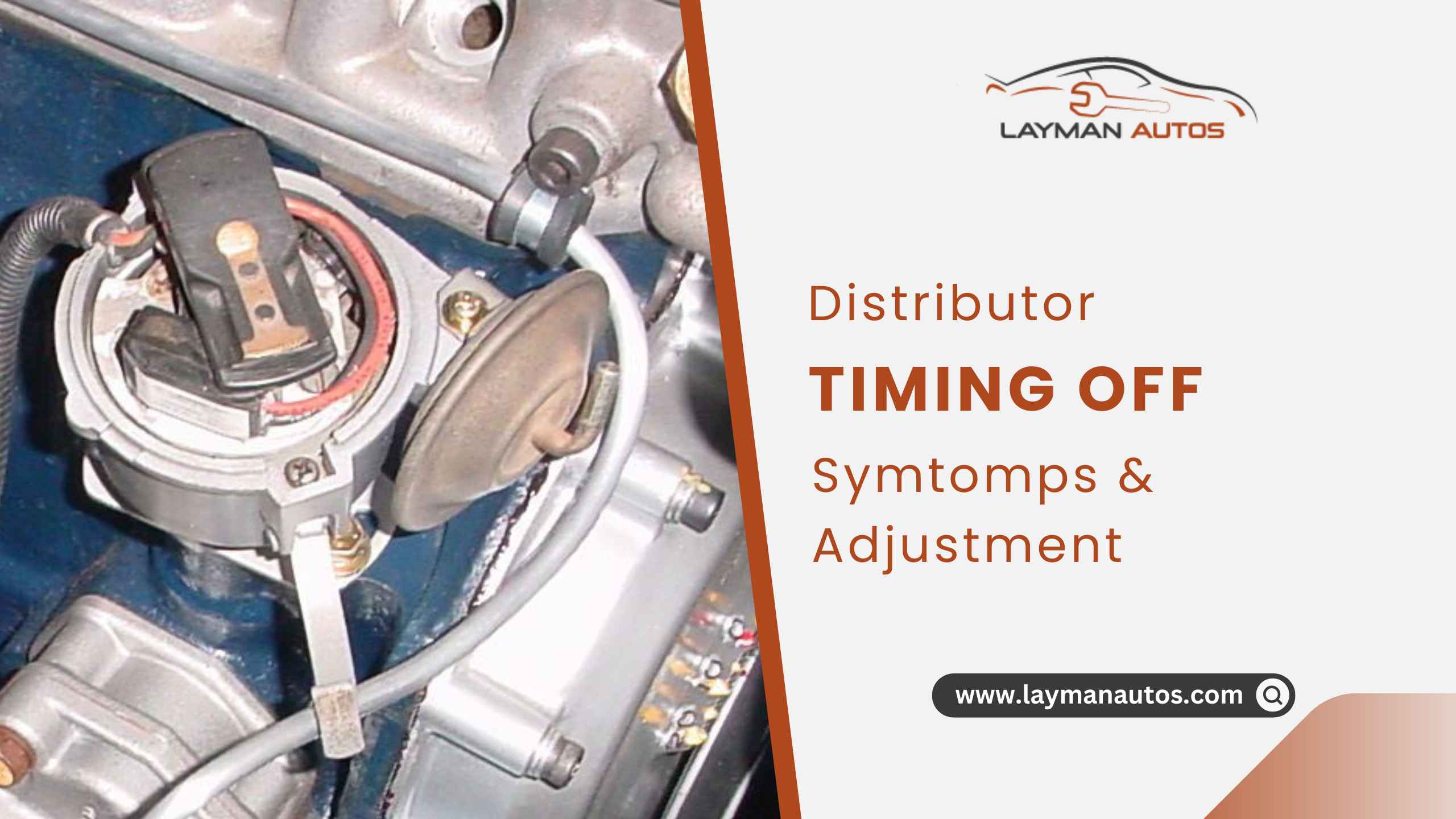Distributor Timing Off Symptoms and Adjustment
Your car’s distributor may be malfunctioning if you’re having difficulties starting it. The distributor aids in the ignition process by distributing spark plug wires to the engine’s cylinders. If it’s malfunctioning, the engine could not turn over. Sometimes, odd symptoms like sputtering or misfiring can be traced back to a defective distributor.
If you suspect your car’s distributor is malfunctioning, bring it in for a diagnostic test. This page covers all aspects of distributor timing off symptoms.
What is a Distributor?
One component of an internal combustion engine’s ignition system is the distributor, whose job is to provide electricity to the spark plugs. A spark plug wire connects the ignition coil to the distributor cap, where voltage is sent to the spark plugs. The capacitor’s center terminal then transfers that voltage to the distributor’s rotor.
Turning the distributor causes the rotor to move, sending current to the cap’s outer terminals in sequence. Next, the voltage is sent from the distributor’s outer terminals to the spark plugs via the spark plug wires. The engine’s air/fuel combination is ignited when the spark plug is activated.

In most vehicles, the distributor is equipped with a pickup coil or other device to detect the distributor’s rotation and initiate the ignition process. In order to signal the engine control module or ignition control module, the mechanism is installed. It is possible that the ignition module is housed within the distributor.
What Exactly Is Ignition Timing?
In order to keep an engine operating smoothly, ignition timing is crucial. Long-term engine damage can occur if the spark plug fires too early or too late during the compression stroke.
The following events take place throughout the procedure:
Compression is When the Spark Plug Ignites.
Combustion occurs when a combination of air and fuel is ignited in the combustion chamber. Due to the expansion of the burning gasses, pressure is generated up inside the cylinder. Maximum pressure occurs at the precise moment the piston reaches its top dead center (TDC).
The Force Exerted on the Piston by the Pressure is Maximized.
The exhaust stroke follows the ignition timing procedure and allows the spent gasses to escape. In order to keep the engine performing at its peak, the timing of the spark is crucial.
Ignition time is affected by a number of variables, including the engine’s temperature, the quality of the spark plugs, and the intake pressure. After making modifications or additions to an engine, the ignition timing will need to be readjusted. Here is how you can set your ignition timing with a distributor.
Ignition Advancing vs. Ignition Retarding
The number of crankshaft rotations before the top dead center is used to determine the ignition timing (BDTC). The timing of the engine’s spark plugs may be adjusted by either advancing or retarding the timing.
When the timing is advanced, the spark plugs fire before the top dead center (TDC) in the compression stroke. The combination of air and fuel in the combustion chamber takes some time to ignite. There may not be enough time to get everything lit without extending the ignition timing.
Increasing an Engine’s Horsepower
Increasing an engine’s horsepower is the primary benefit of shifting the ignition timing ahead. Increasing the top-end power while decreasing the bottom-end is a common goal when adjusting the ignition timing. It aids in overcoming the ignition delay so that the spark can fire at full force.
Spark plugs with retard timing are ignited later in the compression stroke. Engine detonation, or combustion that occurs in the cylinders after the spark plug burns, can be mitigated by delaying the ignition timing. Engine knock is another name for this.
Retarding the timing of an engine might be more advantageous while operating at higher pressure, as is the case with turbocharged or supercharged engines. These engines benefit from having their timing retarded so that they may operate more effectively while being fed heavier air and fuel combinations.
Distributor Timing Off Symptoms
Indicators of a faulty distributor’s timing might indicate a few different problems. The distributor may have reached the end of its useful lifespan and will soon need to be replaced.

The timing belt may also have stretched or worn out and require replacement. Any electrical problem may be fixed by swapping out the distributor.
Engine Misfires
Possible causes of engine misfires include faulty valves or pistons.
Problems with the valves or the piston rings might be to blame. In most cases, the issue may be fixed by repairing or replacing these components.
Oil Leaking
A leak in the engine’s oil system might be the result of a broken oil seal or a cracked oil pipe. Oil and sludge can accumulate in the engine, leading to ignition issues, stalled rotation, and ultimately, engine failure. In most situations, the problem may be fixed by fixing or replacing the seal or pipe.
The Engine Won’t Turn
There are a few potential causes of an engine that won’t turn over, such as a malfunctioning fuel pump, broken steering gear, or a damaged differential bearing Normal operation of the vehicle may generally be restored by repairing any of these components. You might be able to tell if your engine timing is off using different methods.
Ticking Noise
If you hear a ticking noise, it may be because the timing belt has worn out. There is a clicking sound produced by the belt when it slips.
This sound is usually a harbinger of other engine failures and is therefore quite annoying. Most belt problems may be fixed by just changing the belt.
Distributor Timing Adjustment
Whether or whether your distributor housing allows for manual or automated timing adjustment is only one of the variables that might affect this.
In order to manually alter the timing, you must spin the distributor housing in the other direction. Let’s say there’s no way to modify the timing by hand on your distributor housing. If you require a timing adjustment product, you should get in touch with the manufacturer or distributor.
Ignition Timing To Advanced Symptoms
Increased fuel consumption, poor power, overheating, hard starting, and pinging/knocking are all signs that your ignition timing needs to be adjusted.
Changing the ignition timing can fix these problems and boost your car’s efficiency. Adjusting the ignition timing may be necessary if your engine is consuming more gas than usual. If your engine has little power and you have trouble starting it, you may need to change the timing of your ignition. The ignition timing may need to be adjusted if your engine is overheating.
The ignition timing may need to be adjusted if starting your engine is a struggle. If your engine is banging or pinging, it might be time to alter the ignition timing.
Ignition Timing At Idle
Checking the ignition timing might be the solution to your car not starting. When an engine is at a standstill, the timing is the angle at which the spark plugs ignite the fuel.
Depending on the engine and driving circumstances, the ideal timing might range from 6 to 10 degrees. If the timing isn’t quite right, the piston will reach the top of the cylinder before the compression has time to fully develop, leading to poor performance and a loss of power.
If the timing is off, the piston will descend into the cylinder too late, resulting in a lot of wasted energy and poor mileage.
What Can Occur If Your Distributor Timing Is Incorrect?
Reduced power, overheating, higher fuel use, difficulty starting, banging, and an oil leak are just some of the issues that can arise from improper distributor timing. A shortage of gasoline can reduce power, which can cause a failure if the fuel supply is depleted.
The engine’s power and efficiency might suffer through overuse. Knocking indicates incorrect timing or a fuel system issue, while overheating shortens the life of the engine. If the supply of oil is not sufficient to meet the needs of the engine, an oil leak will develop.
If you experience any of these issues, please notify your distributor immediately so they can be fixed. If you respond quickly, you may be able to stop the situation from getting worse and save lives.
What Causes Engine Timing To Be Off
A number of factors, such as a timing belt that is too slack or too weak, an incorrectly set timing, an improper fuel/air ratio, or a high idle speed, can all contribute to an incorrectly timed engine.
- Over-revving the engine due to a loose or weak timing belt is one cause of mistimed combustion.
- When the timing is off, it might be due to a broken timing chain or sprocket, while an improperly calibrated carburetor or fuel injector could be to blame for an improper fuel mixture.
- Overfilling the fuel tank or adding too much gasoline at once might result in a rich fuel mixture. Last but not least, a filthy air filter or a damaged spark plug might contribute to an idle speed that is excessively high.
How Far Off Can Timing Be
The engine will still run with a timing discrepancy of up to 12 crankshaft degrees (2 spark events).
Third Generation vehicles manufactured in 2005 and after are able to identify whether the camshafts are not in the correct position and will shut down if the difference between the camshaft and crankshaft is greater than 12 degrees. The system operates thanks to the notched wheels on each cam (they are plastic).
Ford’s ingenuity in embedding the optical sensor in the oil pump’s backplate to detect the notches is astounding.
Six crankshaft positions (one for each cylinder and one for each camshaft) are transmitted to the computer via the crank sensors, while a total of twelve camshaft positions are transmitted via the camshaft position sensors (CPS).
Frequently Asked Questions
How do you tell if the timing is slightly off?
Reduced power, overheating, higher fuel consumption, difficulty starting, banging, and oil leaks are the most prevalent signs that the timing is incorrect. Get your truck repaired ASAP if you see any of these signs.
What happens when the timing is too advanced?
If the timing is advanced too much, the pressure of the combustion mixture on the piston will cause the engine to misfire. This might be due to a number of factors, such as incorrect timing, piston rings that are too worn or cracked, or an incorrect air/fuel ratio.
Incorrect air/fuel mixture in timing-related problems is the most common cause of engine failure.
Will retarded timing cause a backfire?
In particular, poor timing has negative consequences. Retarded time is a more common term for this phenomenon. This indicates that the fuel-compression-ignition-exhaust cycle in the cylinder head is out of phase with the rest of the engine (cylinder block). This allows the gasoline to be ignited just as the exhaust valve opens, resulting in a delayed ignition cycle.





